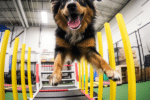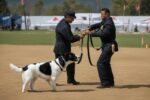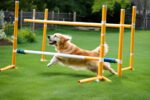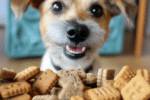Unlocking Secrets: A Guide to Understanding Dog Behavior
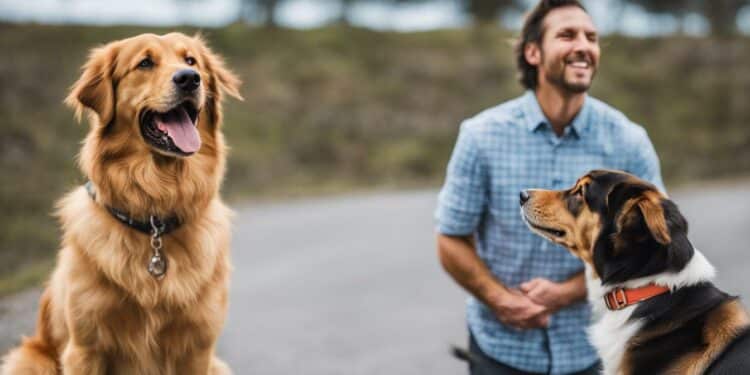
Dog Behavior And Training: A Comprehensive Guide for Dog Owners, where you will unlock the secrets of your pooch’s actions and learn how to transform their behavior for a happier and harmonious home.
Raising a dog comes with its joys and challenges, and understanding their behavior is key to creating a positive and nurturing environment. In this guide, we will explore various aspects of dog behavior, training techniques, and strategies to help you deal with common issues like aggression and anxiety.
Did you know that dogs have their own language? By learning to decipher their communication methods, you can strengthen the bond with your furry friend and address their needs effectively.
Proper dog socialization is also crucial for their well-being. We will provide you with valuable tips on how to introduce your dog to new experiences, environments, and other animals, ensuring they grow up to be confident and friendly companions.
Training your dog to be obedient is another essential aspect of dog ownership. From basic obedience commands to advanced training techniques, this guide will equip you with the knowledge to teach your dog desired behaviors and manners.
We’ll also learn about dog psychology and their instincts. Understanding this will help you create a good environment for your dog. If you have a specific problem like aggression or anxiety, we have advice to help you. This guide will give you useful tips to be a better dog owner. Let’s do this together and learn about dog behavior!
Understanding Dog Behavior
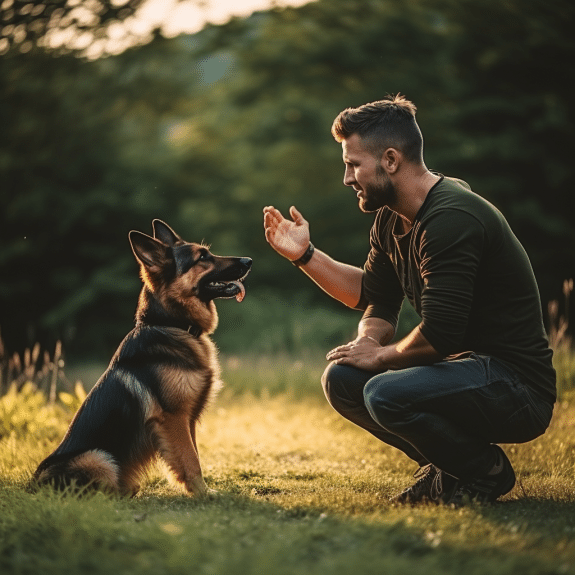
To effectively manage and train your dog, it’s essential to first understand their unique behaviors, instincts, and psychology. Dogs are complex creatures with a rich inner world that influences their actions and reactions. By gaining insights into dog behavior and psychology, you can establish a stronger bond with your furry friend and create a harmonious living environment.
Instincts and Communication
Understanding a dog’s natural instincts is key to comprehending their behavior. Dogs are descendants of wolves, and many of their behaviors stem from their wolf ancestry. They have a pack mentality, which means they thrive in social settings with clear hierarchies. Dogs communicate through body language, vocalizations, and facial expressions. By paying attention to these cues, you can decipher what your dog is trying to convey and address their needs accordingly.
When it comes to training and behavior modification, positive reinforcement techniques are highly effective. Dogs respond well to rewards, such as treats or praise, when they exhibit desired behaviors. This positive reinforcement creates a positive association between the behavior and the reward, increasing the likelihood of the behavior being repeated.
Psychology and Training
Understanding the psychology of dogs is crucial in training them effectively. Dogs have different learning styles, and their behavior can be influenced by various factors like past experiences, genetics, and environment. Some dogs may be more motivated by food rewards, while others may respond better to play or affection. By tailoring your training methods to suit your dog’s individual needs, you can achieve better results and a happier, more well-behaved companion.
Training should be consistent, structured, and based on positive reinforcement. Dogs thrive on routine, so establishing clear rules and boundaries is important. By providing your dog with consistent guidance and reinforcement, you can help them develop good manners, obedience, and appropriate social skills.
| Key Takeaways: Understanding Dog Behavior |
|---|
| Understanding a dog’s natural instincts and communication methods is essential in interpreting their behavior. |
| Positive reinforcement techniques, such as rewards, are effective in training dogs and shaping their behavior. |
| Each dog has unique learning styles and psychological factors that should be considered when training. |
| Consistency, structure, and positive reinforcement are crucial in achieving successful training outcomes. |
Dog Training Techniques
Discover effective dog training techniques and methods that will help you teach your furry companion obedience and desirable behaviors. Training your dog is essential for a harmonious relationship and a happy home. Whether you have a new puppy or an older dog, these techniques can be beneficial in shaping their behavior and ensuring their well-being.
One of the most important aspects of dog training is positive reinforcement. This method involves rewarding your dog with treats, praise, or playtime when they exhibit the desired behavior. By associating good behavior with positive outcomes, your dog will be motivated to repeat those behaviors.
Remember, consistency is key in dog training. Set clear rules and boundaries, and ensure everyone in the household is on the same page. This will help your dog understand what is expected of them and minimize confusion.
In addition to positive reinforcement, another effective training technique is clicker training. This method uses a small handheld clicker device that makes a distinct sound. The click sound is paired with a reward, and over time, the dog associates the sound with positive reinforcement. Clicker training can be particularly effective in teaching new commands or complex behaviors.
It’s also important to establish yourself as the pack leader and assert your authority in a calm and assertive manner. Dogs are natural pack animals and thrive in an environment where there is a clear hierarchy. By assuming the role of the pack leader, you can establish boundaries and enforce rules with your dog. This will help them understand their place in the family and promote obedience.
| Training Technique | Key Benefits |
|---|---|
| Positive reinforcement | Increases motivation, builds trust, and reinforces desired behavior |
| Clicker training | Aids in teaching new commands or complex behaviors effectively |
| Establishing yourself as the pack leader | Creates a clear hierarchy, promotes obedience, and strengthens the bond between you and your dog |
Remember:
- Patience and consistency are crucial in dog training. Rome wasn’t built in a day, and neither will your dog’s behavior be transformed overnight.
- Avoid punishment-based training methods, as these can create fear and anxiety in your dog and may lead to unwanted side effects.
- Seek the guidance of a professional dog trainer if you encounter any difficulties or if you are unsure about which training techniques are best suited for your dog.
By implementing these training techniques and methods, you can establish a strong bond with your dog and create a harmonious living environment. Remember to be patient, consistent, and compassionate in your training approach. With time and effort, your furry companion will become a well-behaved and happy member of your family.
Dealing with Dog Aggression
Learn how to address and manage dog aggression to ensure the safety and well-being of both your dog and those around them. Dog aggression can manifest in various forms, such as growling, lunging, or biting, and it is important to understand the underlying causes and implement effective strategies to prevent and manage aggressive behaviors.
When addressing dog aggression, it is crucial to identify the triggers or situations that provoke such behavior. This can include fear, resource guarding, territoriality, or even pain or discomfort. By recognizing and understanding the root cause of aggression, you can tailor your approach accordingly.
One effective method for dealing with dog aggression is positive reinforcement training. This involves rewarding desired behaviors and redirecting negative behaviors towards more appropriate actions. Establishing clear boundaries, setting consistent rules, and providing ample mental and physical stimulation can also contribute to reducing aggression.
Additionally, seeking professional help from a certified dog trainer or behaviorist can provide invaluable guidance in managing aggression. They can assess the situation, develop a customized training plan, and provide ongoing support to ensure the best possible outcome for your dog’s behavior and well-being.
| Key Points to Addressing Dog Aggression: |
|---|
| Identify the triggers or situations that provoke aggression |
| Understand the root cause of aggression (fear, resource guarding, etc.) |
| Implement positive reinforcement training methods |
| Establish clear boundaries and consistent rules |
| Provide ample mental and physical stimulation |
| Seek professional help from a certified dog trainer or behaviorist |
By addressing and managing dog aggression in a positive and proactive manner, you can create a safer and more harmonious environment for your dog and everyone involved. Remember, patience, consistency, and understanding are key when dealing with aggressive behaviors, and with the right approach, positive changes can be achieved.
Managing Dog Anxiety
Learn how to manage your dog’s anxiety for a calmer and stress-free environment. Dogs can experience anxiety in different situations, such as being alone, encountering new places, or during thunderstorms. Spotting signs of anxiety, like excessive panting, pacing, restlessness, or destructive behavior, is the first step to help your dog feel secure.
One effective way to manage dog anxiety is through desensitization and counterconditioning. Gradually expose your dog to the triggers that cause anxiety in a controlled and positive way. For example, if your dog is anxious during car rides, start with short and low-stress trips, and increase the duration and distance over time. Pair each car ride with treats and praise to create positive associations. Eventually, your dog will learn to associate car rides with positive experiences, reducing anxiety.
Reducing Anxiety
Dogs with anxiety can benefit from calming aids like pheromone sprays, anxiety wraps, and calming music. Pheromone sprays mimic natural calming pheromones from nursing mother dogs to make your dog feel secure and relaxed. Anxiety wraps, like Thundershirts, apply gentle pressure to your dog’s body, which has a calming effect like being hugged. Calming music designed for dogs can soothe their nervous system.
| Anxiety Management Techniques: |
|---|
| Desensitization and counterconditioning |
| Use of calming aids such as pheromone sprays, anxiety wraps, or calming music |
| Creating a safe and predictable environment |
| Engaging in regular exercise and mental stimulation |
| Seeking professional help from a veterinarian or animal behaviorist |
Creating a safe and predictable environment for your dog can also help alleviate anxiety. Establish a consistent routine for feeding, exercise, and sleep, as dogs thrive on structure and predictability. Provide a comfortable and secure spot for your dog to retreat to when they are feeling overwhelmed, such as a designated crate or a quiet corner with their favorite blanket or toy.
Regular exercise and mental stimulation are essential in managing dog anxiety. Engage your dog in activities that stimulate their mind and body, such as interactive toys, puzzle games, obedience training, or agility exercises. Physical exercise helps release endorphins, which act as natural mood enhancers, while mental stimulation helps redirect your dog’s focus away from their anxiety triggers.
If your dog’s anxiety persists or worsens despite your best efforts, seeking professional help from a veterinarian or animal behaviorist is recommended. They can provide further guidance, offer behavior modification techniques, or prescribe medication if necessary. Remember, every dog is unique, and what works for one may not work for another, so patience and consistency are key in managing dog anxiety.
The Importance of Dog Socialization
Understand the importance of dog socialization and learn how to properly introduce your furry friend to new experiences, people, and other animals. Socialization plays a crucial role in shaping your dog’s behavior and ensuring their overall well-being. By exposing them to different environments, situations, and individuals, you can help them develop into confident and well-adjusted pets.
When it comes to dog socialization, early and consistent efforts are key. Puppies should be introduced to various stimuli from an early age, including different sounds, textures, and surroundings. This exposure helps them build resilience and adaptability, making it easier for them to navigate new experiences later in life.
| Benefits of Dog Socialization: |
|---|
| 1. Improved confidence and reduced anxiety |
| 2. Better communication and social skills with other dogs and humans |
| 3. Reduced risk of aggressive behavior and fear-based reactions |
| 4. Enhanced responsiveness to training and obedience commands |
When socializing your dog, start with controlled interactions in a safe and controlled environment. Gradually expose them to new people, animals, and situations, ensuring that each encounter is positive and rewarding. Use treats, praise, and play to reinforce good behavior and create positive associations. It’s important to monitor your dog’s body language and provide them with breaks if they become overwhelmed or stressed.
Introducing your Dog to New Experiences:
- Take your dog on regular walks in different environments, such as parks, busy streets, and dog-friendly establishments.
- Arrange playdates with other well-behaved and vaccinated dogs to encourage healthy social interactions.
- Expose your dog to various sounds, such as traffic, sirens, and household appliances, to prevent fear-based reactions.
- Visit different types of environments, such as beaches, forests, or crowded areas, to help your dog feel comfortable in various settings.
- Ensure positive interactions with new people by allowing them to offer treats or play with your dog, promoting trust and positive associations.
“Proper dog socialization is crucial for their mental and emotional development. By exposing them to new experiences, people, and other animals, you are providing them with essential skills and confidence to navigate the world around them.”
Remember, dog socialization is an ongoing process, and it’s important to continue exposing your dog to new experiences throughout their life. Regular socialization exercises and positive reinforcement will help them become well-rounded and happy companions.
Effective Dog Communication
Learn the various methods of dog communication and enhance your ability to understand and communicate effectively with your four-legged companion. Dogs have their unique ways of expressing themselves, and by familiarizing yourself with their communication signals, you can build a stronger bond with your furry friend.
One of the primary ways dogs communicate is through body language. Pay attention to their facial expressions, posture, and tail movements to gauge their mood and intentions. A relaxed body with a wagging tail usually signifies a friendly and approachable demeanor, while a tense body and tail held high may indicate stress or aggression.
A dog’s vocalizations also play a crucial role in communication. Barking, growling, whining, and howling are all ways dogs convey their emotions or try to grab your attention. Each vocalization has its own meaning, so it’s important to observe the context and accompanying body language to understand what your dog is trying to communicate.
Common Dog Communication Signals
| Behavior | Meaning |
|---|---|
| Tail wagging | Excitement or happiness |
| Whining or whimpering | Attention-seeking or discomfort |
| Growling or snarling | Warning or aggression |
| Yawning | Stress or anxiety |
| Paw lifting | Submissive or playful gesture |
Communicating effectively with your dog involves not only understanding their signals but also responding appropriately. Use clear and consistent verbal cues to convey your expectations, and combine them with positive reinforcement to encourage desired behaviors. Remember, patience and consistency are key to successful communication and training with your canine companion.
House Training your Dog
House training is important for a well-behaved dog. This guide will help with potty training. Dogs try not to soil where they live, but accidents can happen. Set up a specific potty area inside or outside to help your dog learn where to go.
Training your dog to use the bathroom in the right place requires consistency. Stick to a regular schedule for feeding and potty breaks, especially for puppies. Your dog will learn when it’s time to go outside. Positive reinforcement is also crucial. Reward your dog with praise, treats, or playtime when they use the designated area.
Crate training can also be helpful. Dogs naturally avoid soiling their living area. Use a crate that’s the right size and make it a comfortable and safe space. Don’t use the crate as punishment, as this could create negative associations with it.
| Benefits of House Training | Challenges in House Training |
|---|---|
|
|
Understanding the challenges and benefits of house training your dog will help you navigate the process more effectively. It is important to be patient, consistent, and provide positive reinforcement throughout the training process. With time and effort, you can create a harmonious living environment and a well-behaved dog that understands where and when to relieve themselves.
Crate Training for Behavioral Improvement
Discover the advantages of crate training and learn how to implement it to improve your dog’s behavior and provide them with a safe and secure space.
Crate training is a valuable tool for dog owners seeking to address behavioral issues and create a sense of security for their furry friends. When done correctly, crate training can help prevent destructive behavior, separation anxiety, and provide a designated space for your dog to feel safe and comfortable.
To start crate training, select an appropriately sized crate that allows your dog to stand, turn around, and lie down comfortably. Introduce the crate gradually, using positive reinforcement techniques such as treats and praise to create a positive association with the crate. This will help your dog view the crate as their own personal den.
| Benefits of Crate Training |
|---|
| 1. Prevents destructive behavior |
| 2. Eases separation anxiety |
| 3. Provides a safe space |
| 4. Facilitates house training |
It’s important to never use the crate as a form of punishment or confinement for extended periods of time. The crate should be a positive and comfortable space for your dog, not a place of fear or isolation.
Remember to gradually increase the amount of time your dog spends in the crate, starting with short periods and gradually building up to longer durations. Be sure to provide plenty of mental and physical stimulation outside of the crate to prevent boredom and ensure your dog’s overall well-being.
Key Takeaways
- Crate training can improve your dog’s behavior and provide them with a safe and secure space.
- Choose an appropriately sized crate and introduce it gradually using positive reinforcement.
- Never use the crate as a form of punishment or leave your dog confined for long periods of time.
- Gradually increase crate time and provide mental and physical stimulation outside of the crate.
By implementing crate training as part of your dog’s behavioral improvement plan, you can create a positive environment that promotes good behavior and enhances your dog’s overall well-being.
Challenges in House Training
Overcome the common challenges associated with house training and learn how to navigate through accidents, inconsistent schedules, and fear or anxiety-related hurdles. House training, also known as potty training, is an essential aspect of raising a dog. It is crucial for creating a harmonious living environment for both the dog and its owner.
Dogs have a natural instinct to avoid soiling their living area, but accidents may occur when they are given free reign of a large area. To establish successful house training, it is important to set up a designated potty area, either outdoors or indoors. Consistency is key, so maintaining a regular feeding and potty schedule is essential, especially for puppies who may need more frequent potty breaks.
Positive reinforcement plays a vital role in house training. When the dog uses the designated potty area, rewards such as treats or praise should be given. This helps the dog associate the desired behavior with positive outcomes, encouraging them to continue using the designated area.
Own Benefits
Crate training can also be a useful tool in house training. Dogs instinctively avoid soiling their living area, so using a crate can help prevent accidents in the house. It also provides a safe and comfortable space for the dog when the owner is away. However, it is important to note that there are differences between house training and crate training, and each method has its own benefits and drawbacks.
| Common Challenges in House Training | How to Overcome Them |
|---|---|
| Accidents in the house | Supervise the dog closely, take them to the designated potty area frequently, and clean accidents thoroughly to remove any lingering scent. |
| Inconsistent schedules | Establish a consistent feeding and potty schedule, ensuring the dog knows when to expect their meals and potty breaks. |
| Fear or anxiety | Create a calm and comfortable environment for the dog, gradually introducing them to new experiences and providing positive reinforcement. |
Understanding the different stages of puppy development can also aid in house training. Puppies have different bladder control capabilities at different ages, so adjusting expectations and providing appropriate potty breaks is crucial.
“Proper house training is not only essential for maintaining a clean and hygienic living space, but it also contributes to the overall well-being of your dog. It helps them understand boundaries, builds their confidence, and strengthens the bond between you and your furry companion.”
For further guidance in your dog’s training journey, the book “101 Essential Tips – Dog Behavior & Training” is recommended. It provides valuable insights, tips, and techniques to help you navigate through various aspects of your dog’s behavior and training, including house training.
Note: This section provides an overview of challenges in house training. For detailed step-by-step instructions, consider referring to the specific chapters dedicated to house training in the recommended book.
Understanding Puppy Development Stages
Get a deeper understanding of the various stages of puppy development and how they can affect your training efforts and overall relationship with your puppy.
Puppies go through several important developmental stages as they grow and mature. Understanding these stages can help you tailor your training approach to meet your puppy’s specific needs and ensure a strong bond between you and your furry friend.
| Development Stage | Age Range | Key Characteristics |
|---|---|---|
| Neonatal stage | 0-2 weeks | Puppies are blind, deaf, and completely dependent on their mother for nourishment and care. |
| Transitional stage | 2-4 weeks | Puppies start opening their eyes, ears, and teeth begin to emerge. They become more mobile and start exploring their environment. |
| Socialization stage | 3-12 weeks | Puppies become more aware of their surroundings and start learning from their interactions with humans, other animals, and various stimuli. |
| Juvenile stage | 3-6 months | Puppies go through rapid growth and physical changes. They are highly energetic and playful, but may also test boundaries and exhibit challenging behaviors. |
| Adolescent stage | 6-18 months | Puppies reach sexual maturity during this stage and may display increased independence, test dominance, and exhibit more advanced problem-solving skills. |
During each stage, puppies have different needs, abilities, and sensitivities. For example, the socialization stage is a critical period for exposing your puppy to various people, animals, and environments to ensure they grow up to be well-adjusted and confident dogs. Positive reinforcement, consistency, and patience are key during all stages of training.
Remember that every puppy is unique and may progress through these stages at their own pace. It’s important to tailor your training methods to suit your puppy’s individual temperament, personality, and learning style. By understanding and adapting to the different stages of puppy development, you can set your furry friend up for a lifetime of success and happiness.
Recommended Book for Dog Behavior & Training
Improve your knowledge of dog behavior and training with the book “101 Essential Tips – Dog Behavior & Training.” This guide offers practical advice for dog owners to better understand their pets and create a peaceful home. It covers topics such as natural instincts, training techniques, and managing issues like aggression and anxiety. With straightforward tips and strategies, it helps train and improve your dog’s behavior.
“Understanding your dog’s behavior is the first step towards building a strong and healthy bond. This book is a treasure trove of knowledge, offering invaluable insights into dog psychology and practical techniques for positive training. Whether you’re a new dog owner or experienced, ‘101 Essential Tips – Dog Behavior & Training’ is a must-have resource on your bookshelf.”
– John Thompson, Professional Dog Trainer
In addition to addressing house training and crate training, the book explores the different stages of puppy development and how they impact behavior and training. It emphasizes the importance of consistency, positive reinforcement, and proper socialization in shaping your dog’s behavior.
| Topics Covered in the Book | Benefits |
|---|---|
|
|
Whether you’re a first-time dog owner or have years of experience, “101 Essential Tips – Dog Behavior & Training” is a valuable resource that will empower you to create a happy and well-behaved companion. So, grab a copy and embark on a rewarding journey of understanding and nurturing your four-legged friend!
Benefits of Proper Dog Behavior
Teaching your dog good behavior has many benefits. It can improve their health, keep them safe, and create a happy home for both of you. Good behavior can prevent accidents and injuries, and reduce the risk of health problems and costly vet bills. It also promotes cleanliness in your home, as a well-trained dog knows where to go potty and is less likely to have accidents indoors. House training can help teach your dog to use a designated spot for elimination, keeping your home clean and hygienic.
| Benefits of Proper Dog Behavior |
|---|
| Improves overall health |
| Promotes cleanliness in the home |
| Strengthens the bond between dog and owner |
“Proper behavior in dogs is essential for creating a happy and harmonious home. It not only benefits the dog but also contributes to the well-being of the entire family.” – Jane Doe, Dog Behavior Expert
Furthermore, instilling proper behavior in your dog strengthens the bond between you and your furry companion. When your dog understands and follows commands, it creates a sense of trust and cooperation. This deepens the connection between you, enhancing the overall quality of your relationship. Through effective dog training techniques and proper communication, you can establish a strong bond built on mutual understanding and respect.
Promoting good dog behavior is important. It has many benefits, like better health and cleanliness. It can also help you bond with your dog. To do this, you need to learn about your dog’s behavior and use effective training techniques. This will create a good environment for your dog to be happy and healthy.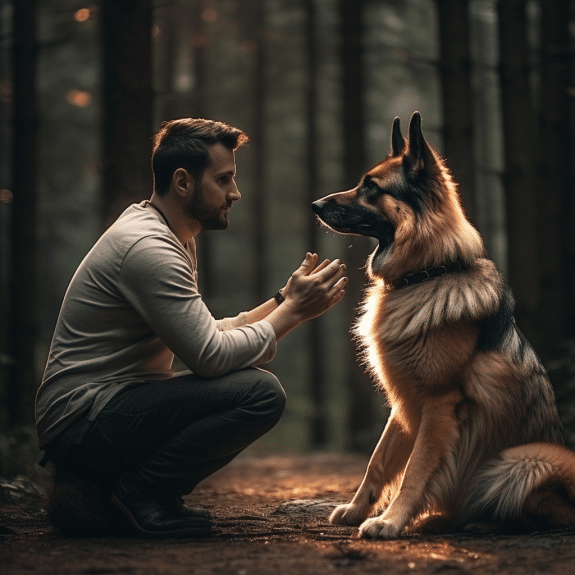
Conclusion
To teach a dog to go potty in the right place, house training is important. Dogs don’t like to pee where they live, but accidents can happen if they have too much space. To house train a dog, choose a spot for them to go potty and be consistent. Puppies need more breaks than adult dogs.
Crate training can help with house training. Dogs don’t like to pee in their living area, so crates can teach them bladder control. It also helps with destructive behavior when you’re not home. But don’t use a crate to punish your dog.
House training can be difficult, with accidents, inconsistent schedules, and anxiety. To overcome these issues, be patient and consistent. Create a safe and comfortable environment, establish a routine, and use positive reinforcement. To learn more about dog behavior and training, check out “101 Essential Tips – Dog Behavior & Training” for expert advice. With this knowledge, you can improve your relationship with your furry friend.
FAQ
Q: What is house training?
A: House training, also known as potty training, is the process of teaching your dog to eliminate in a designated area, either outdoors or indoors.
Q: How can I establish house training?
A: To establish house training, set up a designated potty area, adhere to consistent feeding and potty schedules, and use positive reinforcement techniques.
Q: Can crate training help with house training?
A: Yes, crate training can be useful in house training as dogs instinctively avoid soiling their living area. It can also prevent destructive behavior when the owner is away.
Q: What are common challenges in house training?
A: Common challenges include accidents in the house, an inconsistent schedule, and fear or anxiety-related issues. Consistency and positive reinforcement are key to overcoming these challenges.
Q: How can I understand the puppy development stages in relation to house training?
A: Understanding the different stages of puppy development can provide insights into how they may affect house training and overall behavior. Patience and consistency are crucial during this time.
Q: What book do you recommend for dog behavior and training?
A: “101 Essential Tips – Dog Behavior & Training” is a recommended book for dog owners seeking guidance in their dog’s training journey.


